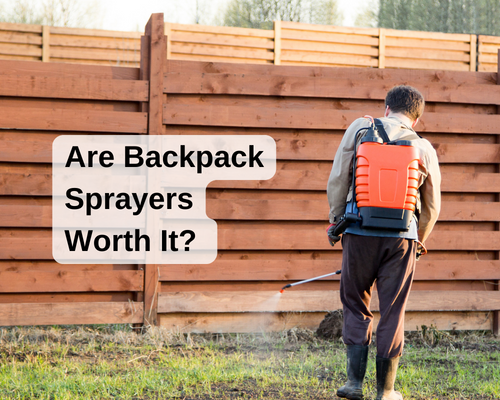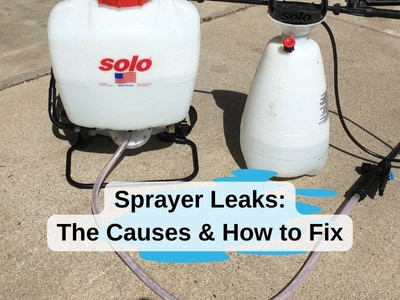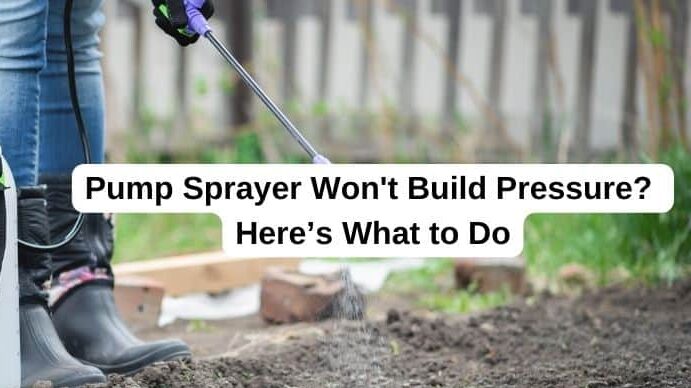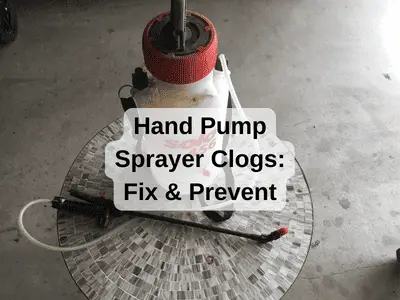If you want to use a pesticide in your home to eliminate insects or other intruders, you need a tool to effectively apply that pesticide. Liquid pesticides are best applied with a sprayer. There are many different types of sprayers so naturally, This leads us to the question “What sprayers can be used indoors?”.
Many different types of sprayers can be used indoors if you are applying pesticides around your home yourself, the best choice is typically a hand pump sprayer. Pest control professionals will utilize larger commercial-grade sprayer rigs that are mounted in a van or truck. The sprayers have several hundred feet of hose allowing them to enter the home and apply pesticides and hard-to-reach areas without needing to bring the entire sprayer inside.
These are the main types however There are many variations of different types of pest control sprayers that can be used indoors. Let’s examine all the variations and specific situations where each different sprayer will work best.
Can I Use a Sprayer Indoors?
Are you considering using a sprayer indoors but not sure if it’s the right move? It’s a common question for those dealing with indoor pests.
A sprayer can be used indoors to apply pesticides as long as the label on the product being sprayed indicates that the chemical can be used indoors. The critical factor is to select a sprayer that doesn’t leak or drip, ensuring cleanliness and precision in application.
How do I Know If a Sprayer Can Be Used Indoors?
There are many types of sprayers used indoors. The factors limiting whether a sprayer can be used indoors are the power source, size, and what you are spraying.
Power source
Most Sprayers used indoors have either manual or electric pumps. Engine-driven sprayers will produce fumes that can be hazardous in closed spaces. However, an engine-driven sprayer can be used if it is equipped with a very long discharge hose so the sprayer can be outside and the operator can still access areas indoors.
Size
The size of the sprayer obviously limits where it can be used. Not only must a sprayer for indoor use be able to fit in the building, but It also needs to be maneuverable indoors.
Larger buildings like warehouses or arenas may be able to accommodate a pull-type sprayer or vehicle-mounted sprayer.
Substance Sprayed
Even if a sprayer is suited for indoor use, if it is spraying a harmful product or substance that cannot be used safely indoors, then it should be limited to outdoor use only. For more information, you can read this article on what pesticides can be used indoors.
Quality
Avoiding leaks is even more crucial when you are spraying pesticides indoors. Inexpensive sprayers may work fine, but lower-quality components can wear out prematurely and result in a leaky sprayer.
For indoor spraying, you need a durable polyethylene sprayer or stainless steel sprayer.
If you have a sprayer that is dripping or not working properly, you can find out how to fix it in this article on troubleshooting a hand pump sprayer.
Design Features
No matter what type of spray you use, the application of liquid is done with a spray gun. The nozzle on the end of the gun controls the pattern and flow rate of the liquid. When you release the trigger on the spray gun any fluid still in the wand extension can drip out the nozzle. For indoor use, a “drip-free” sprayer gun is recommended.
This type of spray gun seals off immediately directly behind the spray nozzle or spray tip. This prevents fluid from dripping out when you finish spraying an area.
You can find sprayers that come with this feature, but if you have an existing sprayer and want to ensure that it does not drip or leak, there are ways to modify it. If you want to learn more then you should read this article about how to keep spray nozzles from dripping.
Various Sprayer Types Used Indoors
Handheld Sprayers
Handheld sprayers are a classic and accessible choice for indoor use. Compact and easy to use, they are ideal for tasks such as applying pest control liquids, disinfecting surfaces, or applying cleaning solutions.
A handheld sprayer is typically powered manually, meaning pressure is produced by “pumping” the handle. There are some battery-powered versions as well. The size of the sprayer tank typically ranges from one to two gallons, making these sprayers lightweight and portable. Most models also offer adjustable nozzle settings, which allows users to control the spray pattern and volume.
Many pesticide manufacturers offer small sprayers with pre-diluted mixtures of their products. These typically have a small trigger wand that is battery-powered. These are intended to apply a small amount of liquid in and around the home. These sprayers are often much smaller in capacity than the hand pump sprayers that are made to be used with any pest control product.
While handheld sprayers are convenient and affordable, their primary limitation is their capacity. They may not be the best option for larger tasks, as frequent refilling can be required. If you are looking for more details on the specifics of using and fixing a handheld sprayer be sure to examine these other resources:
Backpack Sprayers
Backpack sprayers are a step up from handheld models in terms of capacity and efficiency. These sprayers, which can hold between three and five gallons of liquid, are worn on the back like a backpack, allowing users to cover more area without needing to refill constantly. They are particularly effective for indoor gardening, pest control, or disinfection in large spaces.
Depending on the model, backpack sprayers can either be pumped manually or battery-powered. Battery-powered units provide consistent pressure and spray patterns. The drawback for backpack sprayers is they can be somewhat bulky and heavy when filled to capacity, which may not be comfortable for extended use.
There are several aspects of backpack sprayer use that are worth delving into deeper. You can find detailed information in these backpack sprayer guides:



Professional Pest Control Spray Rigs
While pest control pros do utilize hand pump and backpack sprayers, they employ larger commercial sprayers for increased efficiency and control. Their importance lies in the precise delivery of these chemicals, ensuring minimal wastage, reduced exposure to harmful substances, and maximal effectiveness in pest eradication or control.
Commercial-grade pest control spray rigs consist of large tanks and pump units that can propel fluid much further and at much higher rates than handheld and backpack sprayers. They also offer more precise control via pressure-regulating valves. These valves can be adjusted as needed by the operator.
The pumps can vary in type and capacity, with diaphragm and piston pumps being common choices. A long hose, often mounted on a reel for convenience, extends from the rig to the area to be treated. At the end of the hose, precision sprayer guns and nozzles come into play. These components allow for accurate targeting and distribution of the pesticide, minimizing overspray and ensuring a comprehensive application.
High-pressure pumps enable faster and more efficient coverage of large indoor areas, saving time and reducing labor costs. These rigs can be used for various pest control applications, from treating residential homes to commercial facilities. The choice of nozzles and spray patterns allows for adaptability in different situations.
While powered spray rigs offer numerous benefits, they do come with some limitations. These rigs can be relatively expensive, which may pose a barrier for smaller pest control operations. The rig’s size and hose length may be challenging in tight indoor spaces, limiting accessibility.
Pesticide Application in Your Home
When applying pesticides inside houses or other residences, safety is a top priority. It’s essential to use sprayers that provide controlled and localized application to minimize pesticide exposure to humans and pets.
Both hand pump sprayers and backpack sprayers are suited for this type of use. They allow the operator control over where the fluid is dispersed. The trigger gun along with the wand extension and nozzle offer precise directed control. With a solid stream or narrow cone nozzle, the pesticide is applied close to the surface where it is needed. The narrow stream is ideal for cracks, baseboards, behind appliances, etc. If you need a more detailed guide on how to apply pesticides, take a look at this article on how to apply pesticides around the home.
A hand pump sprayer is ideal for DIY pest control. It is a smaller investment than a backpack sprayer. If you need only spray a few times a year, then it is less costly and still offers you the same precise application.
Final Thought
In conclusion, when it comes to using sprayers indoors for pest control or other applications, there are several key considerations to keep in mind. The choice of the right sprayer depends on factors such as the power source, size, substance being sprayed, quality, and design features.




